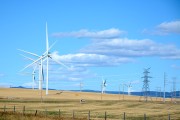We all know that climate change is impacting the arctic, but what about the people who live there? For the remote communities in Northern Canada and Alaska that rely on a steady supply of fuel and supplies, sustainability is a matter of survival. One area where the impacts of climate change are being felt the most is energy.
Remote Communities
Canada has nearly 300 remote communities and off-grid sites. Close to 200,000 Canadians call these communities home and many rely on diesel powered electric generators to keep the lights on and drinking water flowing. While these systems are reliable, diesel generators are expensive to run. Electricity in remote communities can cost as much as 10 times more than the prices that those of us in the rest of the country enjoy. As climate change continues to affect our weather patterns, communities in the north are already feeling the impacts. Many remote communities rely on ice roads during the winter months to transport diesel fuel and with shorter winters and more unpredictable temperatures they are at risk of further isolation, which could require alternative, more expensive delivery options.
Producing electricity in remote First Nations is expensive, but also requires resources that must be continually imported from outside the community. As a result, diesel fuel results in local air pollution, risks of contaminating soils as a result of a spill, and detracts from long-term energy self-sufficiency.
Solution: Renewables
Renewable energy is quickly becoming a realistic option to help remote communities reduce their costs and improve their long-term sustainability. From Alaska to Australia, communities around the world are proving that the innovative deployment of renewable technologies works very well in remote locations. Alaska alone has more than 20 wind-diesel hybrid systems up and running.
Advances in renewable energy technology are not just being taken advantage of by remote communities. From Canada to Antarctica, mines and research stations are also deploying renewable energy systems to keep costs and fuel import risks down.
Technological advances keep improving the picture, for mines as well as communities. For example, the price of solar photovoltaics has dropped so drastically in recent years that it no longer makes sense to be talking about wind as the only renewable technology option that works in remote settings.
So now what?
We believe that the next step is to bring together some of the stories and the experts from around the world to share how we can make clean energy a reality in some of the most challenging settings. Later this month, the MaRS Discovery District in Toronto is hosting a conference, supported by both of our organizations, on precisely this subject. It is one important example of the ways that government, the private sector and NGOs can come together, share their experiences, and get the conversation about the role that renewable energy can play in remote communities moving forward.
And yet, there is a tremendous amount of work still to be done to connect remote communities to the renewable energy sources of the future. It is essential work if we are to preserve the unique environment of our arctic frontiers and to help remote communities live there as sustainably as possible.






